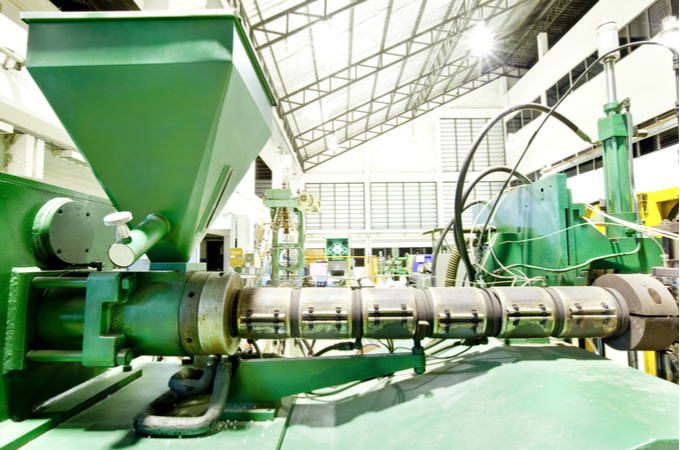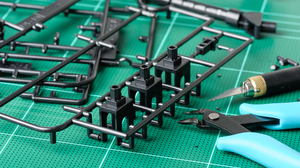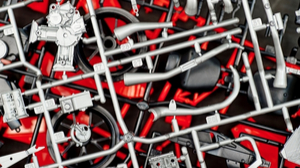
Injection molding cycle time is one of the biggest factors in the efficiency of your molding process, and, by extension, a major factor in the cost and bottom line implications of any injection molding project you tackle. In short, the faster your cycle time (while, critically, maintaining an acceptable level of quality), the more parts you’re able to produce with less machine time, and the lower your overall costs.
Why Cooling Time Is Important
Proper cooling time is not only a major factor in the end quality of a part — it’s the most time-consuming component of an injection molding cycle. Cooling typically makes up 80 to 85 percent of the overall cycle time. When you consider that the cooling part of the cycle is the counterpart to the immense amount of heat required to liquefy the plastic resin during the injection process, this 85 percent figure makes a lot of sense.
As a quick refresher, let’s take a look at the cooling process within the overall injection molding cycle, which will help shed some light on why it’s so important:
- Resin heating: In this initial stage, the base resin is heated to a temperature that liquefies it and brings it to the ideal viscosity and flow rate for injection.
- Injection: The heated material is injected into the mold cavity or cavities.
- Packing and holding: Injection continues as some of the material that has already been injected begins to cool and shrink. The pack/hold stage injects additional material to ensure that the cavity is completely filled, and “holds” the material there to prevent any backflow.
- Cooling: Once packing/holding is complete, the cooling stage is considered to have begun. Although material begins to cool as soon as it exits the heated injection nozzle and enters the mold cavity, cooling time should only be calculated as a separate phase, after packing and holding. At this point, the liquefied resin begins to re-solidify and hold the shape of the mold cavity.

- Ejection: Once the material has cooled and solidified to a point where it will hold its shape, the part can be ejected via the mold ejector pins.
- Quality assurance: Parts are spot-inspected for proper production and quality. Insufficient cooling time can cause part defects and rejections, which we’ll cover shortly.
As you can see, the importance of the cooling phase should not be overlooked. Nor should cooling time simply be “eyeballed,” or — unless you have an excess of time and resources to spare — assessed by trial and error. The issue? Cooling time has a wide number of variables, including part thickness, material qualities, heating temperature, and injection and holding time. Essentially, there’s no “catch-all” reference for cooling times — it’s unique for every project, based on different values for each variable.
Estimating Injection Molding Cooling Time
Fortunately, cooling time can be reasonably accurately estimated using an equation, which relies heavily on the thickness of the part, and a number known as “effective thermal diffusivity.” Thermal diffusivity is a measure of how heat travels into — and exits out of — a given material. Also, when factored with the thickness of a part, composes the bulk of the measure of cooling time.
Thermal diffusivity can be calculated by dividing the thermal conductivity of a part by the product of its density multiplied by its specific heat (the energy required to raise its temperature 1 degree). Each of these values can be found on the spec sheet for the material in use, or by contacting the manufacturer. Since cooling time is so important, it’s best to take these numbers from a firsthand source (rather than third-party websites, for example).
Once you know the thermal diffusivity of the part, you can plug it into the rest of the cooling time equation. First, divide the square of the part thickness by the product of the following: the square of the thermal diffusivity, multiplied by 6.28 (or two times “pi”). This number is then multiplied by a logarithmic equation. If you’re not an engineer, now might be the time to give one of your engineers a call.
For those interested, the initial number calculated is multiplied by the log function of melt temperature minus mold temperature (the optimal temperature at which the material will hold the contour of the mold); divided by ejection temperature minus mold temperature; times four divided by “pi.” Fortunately, a number of calculators exist online that will carry out this equation for you. Of course, any injection molding partner worth its salt should be well-versed in these figures.
The Importance of the Mold in Cooling Time
 As you can see from above, mold cooling plays a big factor in injection molding cooling time. Mold design is also a big factor here: Cooling channels can and should be designed into the mold whenever possible, to assist with more efficient heat dispersal. The importance of efficient mold cooling is readily illustrated when you consider the pathway of heat in the cooling process: from the material, to the mold, to the ambient surrounding environment. Efficient mold cooling means efficient overall cooling.
As you can see from above, mold cooling plays a big factor in injection molding cooling time. Mold design is also a big factor here: Cooling channels can and should be designed into the mold whenever possible, to assist with more efficient heat dispersal. The importance of efficient mold cooling is readily illustrated when you consider the pathway of heat in the cooling process: from the material, to the mold, to the ambient surrounding environment. Efficient mold cooling means efficient overall cooling.
What Can Happen With Insufficient Injection Molding Cooling?
The biggest issue you’ll encounter with improper or insufficient injection molding cooling time is defective and rejected parts. The most common scenario will be parts that have not yet solidified enough to hold their shape, which are then damaged by the firing of the ejector pins. Improper or inefficient cooling — including poor mold design — can also lead to part errors such as warping, shrinking, sink and more. Consistent, well-engineered cooling time is one of the biggest steps you can take to raising the quality of your finished parts and reducing your number of defects.
One additional factor to remember: Proper cooling temperature doesn’t mean reaching, say, room temperature, or being cool to the touch. A part should only be cooled to the point at which it will retain its shape and can be safely ejected from the mold. Any further cooling is not effective (or is barely effective) and will only lengthen cycle time needlessly.
Ultimately, mathematically estimating the proper cooling time for your part will help you avoid excessive cooling time just as much as insufficient cooling time.



